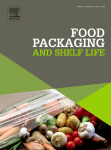
Food Packaging and Shelf Life
metrics 2024
Transforming food packaging for improved shelf life and safety.
Introduction
Food Packaging and Shelf Life is an esteemed peer-reviewed journal published by Elsevier, dedicated to advancing the field of food science through innovative research on packaging materials and their impact on food preservation. With an impressive impact factor and ranking within the Q1 quartile across several categories—including Biomaterials, Food Science, and Microbiology (medical) provided in Scopus raking—this journal serves as a vital resource for researchers, academics, and industry professionals aiming to enhance food safety and quality. Established in 2014, it encompasses a multidisciplinary approach that integrates engineering, microbiology, and materials science perspectives to address current challenges in food packaging. Although currently not an open-access journal, it offers various subscription options, ensuring accessibility to cutting-edge research. As the sector rapidly evolves, Food Packaging and Shelf Life remains a critical platform for disseminating knowledge and fostering collaboration in the pursuit of sustainable food systems.
Metrics 2024
 1.47
1.47 8.50
8.50 8.60
8.60 73
73Metrics History
Rank 2024
Scopus
IF (Web Of Science)
JCI (Web Of Science)
Quartile History
Similar Journals
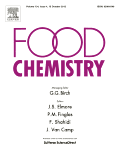
Food Chemistry
Exploring the Science Behind Every BiteFood Chemistry, published by Elsevier Science Ltd, is a leading international journal dedicated to the publication of high-quality research in the field of food chemistry. Established in 1976, this journal has made a significant impact in its realm, with an impressive 2023 impact factor and ranked Q1 in Analytical Chemistry, Food Science, and miscellaneous Medicine categories. It currently holds a remarkable Scopus ranking of #3 in Analytical Chemistry and #11 in Food Science, signifying its relevance and prestige among the top scholarly publications. With a wide scope that includes the chemistry of food composition, flavor, and safety, Food Chemistry serves as an essential resource for researchers, professionals, and students alike, offering insights and advancements in food analysis and technology. Access options may vary, and the journal is committed to disseminating innovative findings to foster knowledge and application in the dynamic field of food science.

FOOD TECHNOLOGY AND BIOTECHNOLOGY
Pioneering Research for a Sustainable Food FutureFOOD TECHNOLOGY AND BIOTECHNOLOGY is a distinguished peer-reviewed journal published by the Faculty of Food Technology and Biotechnology, University of Zagreb, Croatia. Since its inception in 1993, this Open Access journal has become a crucial platform for disseminating innovative research in the fields of food science, biotechnology, and chemical engineering. With a commendable impact factor and consistent Q2 and Q3 rankings across multiple categories—including Biotechnology, Food Science, and Industrial Engineering—this journal not only fosters academic discussions but also addresses real-world challenges in food production, safety, and sustainability. As it converges its thematic scope from 1996 to 2024, FOOD TECHNOLOGY AND BIOTECHNOLOGY remains committed to advancing knowledge through high-quality research and interdisciplinary collaboration, making it an essential resource for researchers, professionals, and students seeking to stay at the forefront of food innovation and biotechnology.

Food Hydrocolloids for Health
Connecting Food Science and Health Through ResearchFood Hydrocolloids for Health, published by ELSEVIER, stands at the forefront of research in the fields of food science, gastroenterology, nutrition, and pharmaceutical science. With an ISSN of 2667-0259 and an impressive positioning in the academic community, the journal is ranked Q1 in Food Science and Pharmaceutical Science, alongside Q2 rankings in Gastroenterology and Nutrition and Dietetics as of 2023. This journal serves as a critical platform for disseminating innovative findings related to the health benefits of food hydrocolloids, emphasizing their applications and efficacy in nutrition and medicine. Researchers, professionals, and students can access cutting-edge studies that promote the understanding of health outcomes derived from hydrocolloid-based foods. The journal’s international outreach from the Netherlands facilitates a diverse array of contributions, making it essential for those engaged in advancing knowledge within these dynamic disciplines.
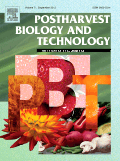
POSTHARVEST BIOLOGY AND TECHNOLOGY
Unlocking the Secrets of Postharvest ExcellencePOSTHARVEST BIOLOGY AND TECHNOLOGY is a leading journal published by Elsevier, focusing on groundbreaking research in the fields of Agronomy, Food Science, and Horticulture. With an impressive impact factor and quartile rankings of Q1 in 2023 across all three disciplines, it is recognized for its significant contributions to enhancing postharvest processes and technologies. The journal offers a platform for multidisciplinary exchange, welcoming studies that explore innovative methods to improve food quality, shelf life, and safety. Researchers and practitioners alike will find valuable insights in its extensive archives, which encompass studies from 1991 to 2024. While it is not an open-access journal, subscribers gain exclusive access to high-impact articles and critical reviews that facilitate advancements in the sector. Based in the Netherlands, at Radarweg 29, Amsterdam, this esteemed publication is essential for professionals who aim to stay at the forefront of postharvest biology and technology.

Food and Bioprocess Technology
Transforming Food Systems Through Bioprocess InnovationFood and Bioprocess Technology, an esteemed journal published by Springer, serves as a premier platform for disseminating cutting-edge research in the realms of food science, industrial manufacturing engineering, and process chemistry and technology. Established in 2008, the journal has quickly ascended to the prestigious Q1 quartile in multiple categories, highlighting its impact and relevance within the scientific community. With an impressive Scopus ranking that places it in the top tiers of its fields—such as rank #17 in Safety, Risk, Reliability, and Quality, and rank #38 in Food Science—this journal is pivotal for researchers and professionals aiming to publish innovative findings that advance food processing and bioprocess technology. Beyond its rigorous peer-review process, the journal facilitates access to high-quality, impactful research, reinforcing its significant role in shaping the future of biotechnological applications in food systems. Aimed at both scholars and practitioners, Food and Bioprocess Technology is an essential resource for those engaged in exploring sustainable practices and enhancing food quality and safety. Furthermore, by addressing essential topics in the field, it fosters collaboration and knowledge exchange among researchers dedicated to advancing the bioprocessing landscape.
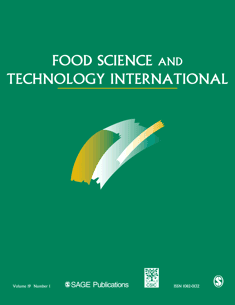
FOOD SCIENCE AND TECHNOLOGY INTERNATIONAL
Advancing innovation in food science and technology.FOOD SCIENCE AND TECHNOLOGY INTERNATIONAL, published by SAGE Publications Ltd, is a premier journal in the fields of food science and technology, serving as a crucial platform for the dissemination of innovative research and practical applications from 1995 through to 2024. With an impact factor reflecting its significant standing—ranking in the Q2 quartile for Chemical Engineering, Food Science, and Industrial and Manufacturing Engineering—this journal plays an instrumental role in advancing the interdisciplinary study of food systems. Researchers, professionals, and students can access high-quality contributions that address the latest developments and trends in food technology, safety, and processing. Located in the United States, FOOD SCIENCE AND TECHNOLOGY INTERNATIONAL also boasts commendable Scopus rankings, ensuring its articles are both relevant and widely cited within the academic community. As a vital resource for anyone engaged in food science research, этот журнал fosters knowledge sharing and innovation in the ever-evolving landscape of food technology.

Journal of Future Foods
Advancing the frontiers of food innovation.Welcome to the Journal of Future Foods, a prominent peer-reviewed publication dedicated to advancing knowledge and innovation within the realms of Agricultural and Biological Sciences, Food Science, and Nutrition and Dietetics. Published by KEAI PUBLISHING LTD in China, this journal has rapidly achieved a distinguished reputation, reflected in its impressive Q1 category ranking for both Agricultural and Biological Sciences and Food Science, along with a strong standing in Nutrition and Dietetics. The journal, which spans the period from 2021 to 2025, is committed to fostering interdisciplinary research that addresses the challenges and opportunities presented by the future of food. With a focus on open access, the Journal of Future Foods aims to disseminate crucial findings and foster collaborative dialogue among researchers, professionals, and students alike. By submitting your work, you not only contribute to cutting-edge advancements in the field but also join a vibrant community engaged in redefining the future of food systems.

Carbohydrate Polymer Technologies and Applications
Innovative Insights into Carbohydrate Polymer TechnologiesCarbohydrate Polymer Technologies and Applications, published by ELSEVIER, is an esteemed open access journal that has been fostering innovation in the field of carbohydrate polymer research since its inception in 2020. With its ISSN 2666-8939, this journal is dedicated to exploring the intersections of analytical chemistry, biochemistry, biotechnology, and materials science, making significant contributions to our understanding of carbohydrate polymers and their diverse applications across various industries. Notably, it has attained a prominent position in various categories, reflecting its quality and impact: ranked Q1 in Analytical Chemistry, Biotechnology, and several Materials Science disciplines, while maintaining strong positions in the Q2 and other quartiles. Additionally, with impressive Scopus rankings—14th in Chemistry (miscellaneous) and 23rd in Analytical Chemistry—it stands at the forefront of scholarly dialogue in these areas, appealing to researchers, professionals, and students alike. The journal's commitment to open access facilitates wider dissemination of knowledge and enhances collaborative research, solidifying its role as a pivotal resource for advancing carbohydrate polymer technologies.
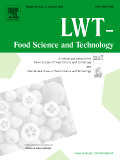
LWT-FOOD SCIENCE AND TECHNOLOGY
Bridging the gap between research and industry.LWT - Food Science and Technology is a premier academic journal published by Elsevier, specializing in the multifaceted fields of food science and technology. With a distinguished presence since its inception in 1973, this journal has evolved to become a vital resource for researchers and professionals aiming to advance knowledge in food safety, preservation, processing, and sensory analysis. Currently ranked in the Q1 quartile of food science journals, it holds an impressive Scopus ranking of 22 out of 389 in the Agricultural and Biological Sciences category, placing it in the 94th percentile. While certain articles may be available via subscription, LWT is committed to disseminating cutting-edge research that enhances food quality and innovation. This journal not only serves as a critical platform for the exchange of scientific ideas but also addresses contemporary challenges in food technology, ensuring that it remains essential for scholars, industry professionals, and students alike seeking to contribute to and stay abreast of advancements in the field.

Food Additives and Contaminants Part A-Chemistry Analysis Control Exposure & Risk Assessment
Transforming knowledge into safer food practices.Food Additives and Contaminants Part A-Chemistry Analysis Control Exposure & Risk Assessment, published by Taylor & Francis Ltd, is a leading journal in the field of food science, toxicology, and public health. With an ISSN of 1944-0049 and an E-ISSN of 1944-0057, this esteemed publication has established itself as a vital resource for researchers and professionals involved in the analysis and regulation of food additives and contaminants. Since its inception and through its converged years from 2008 to 2012 and again from 2014 to 2023, the journal has maintained an impactful presence, notably achieving a Q2 ranking in diverse categories including Chemistry (miscellaneous) and Food Science, alongside commendable standings in Health and Environmental Health. The journal’s mission is to foster high-quality research by providing a platform for critical studies related to chemical analysis, exposure assessments, and risk management in food safety. By prioritizing engaging, peer-reviewed content, it aims to enhance understanding and mitigate risks associated with food additives, making it an indispensable tool for academics, practitioners, and policymakers alike.